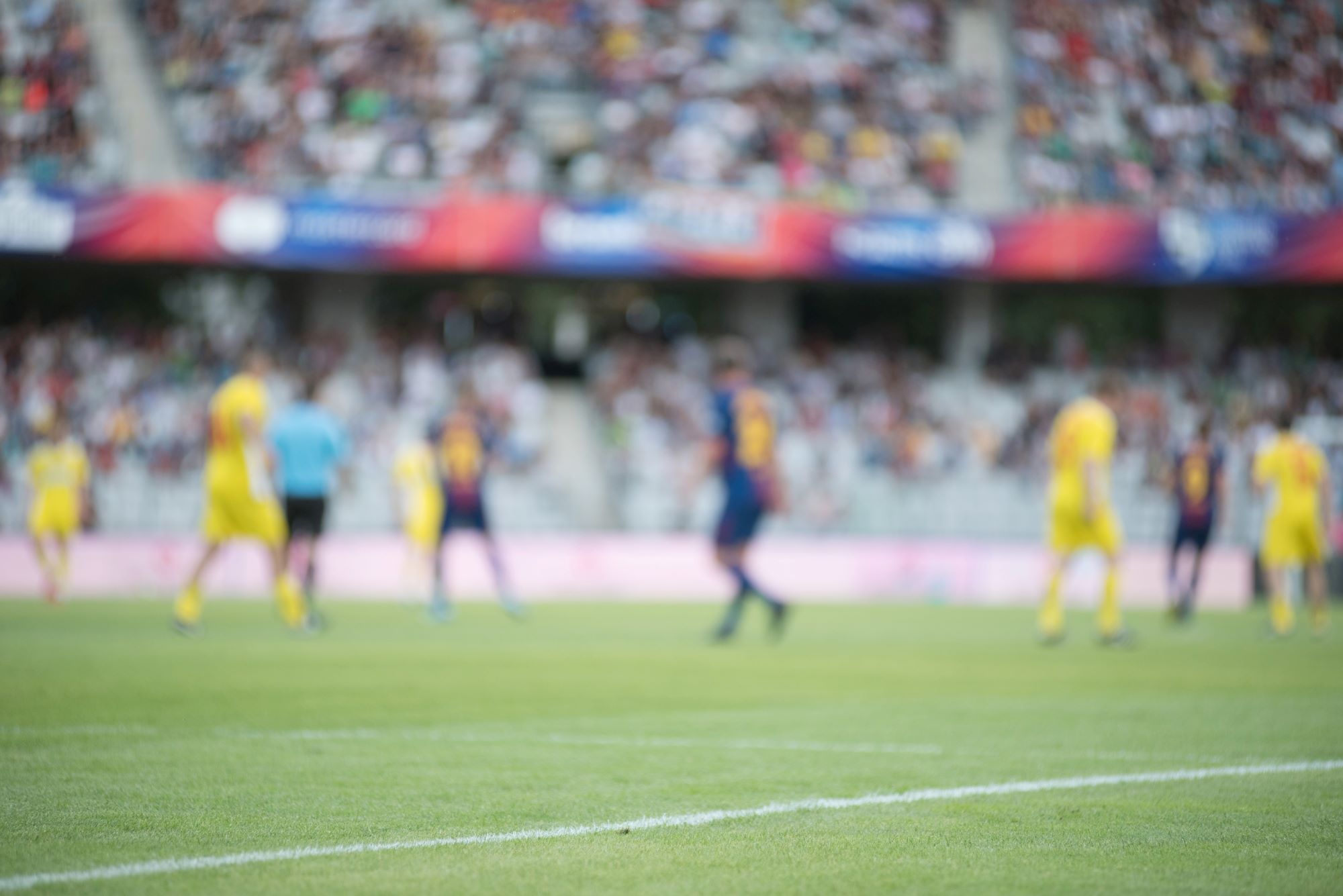The Development of Penalties Within Football
The Development of Penalties
When Bakary Saka stepped up to take his penalty against Italy in the final of Euro 2020, he knew he needed to score. If he missed, the dream of England winning their first major trophy for 61 years would be over.
Whether in a shoot-out, or awarded during a match, a penalty kick is one of the most dramatic moments in football. Not only can it decide the outcome of a match, there is also something inherently tense and exciting about it. On the pitch at Wembley, it looked like one man against the goalkeeper: the two of them facing each other, like duellists, as they waited for the referee to blow his whistle.
That image doesn’t tell the full story. In modern football, a penalty is often a collective effort.
When Gareth Southgate took over as England manager, the team started to work hard to prepare for penalties. The players regularly practised spot-kicks at the end of training sessions, to recreate the feeling of tired legs after a long match. They practised the long walk from the half-way line to the penalty spot, to recreate the feeling of pressure. They were taught to pick a spot to shoot at and stick to it. All this was done so that the players would know exactly what to do when they needed to take a penalty.
“People say it’s luck but I don’t believe in that. If you practice your penalty and know where you’re putting it before you can get an advantage going into it,” explained England defender John Stones, earlier in the tournament. When Saka stepped up, it wasn’t as an individual but as part of a team that had a definite strategy for succeeding in such a moment as this.
A penalty kick may look simple, but ever since the set piece was first introduced, a lot of thought and effort has gone into finding both the best way to take one and the best way to save one.
The Early Days
In the earliest days of the sport, there was no such thing as a penalty kick. The FA Cup, founded in 1871, ran for its first twenty seasons without them. When a foul was committed near the goal, it resulted in a free-kick, just as it would anywhere else on the pitch. Back then, all free-kicks were indirect, meaning that the taker had to pass the ball and was forbidden from shooting.
William McCrum, an Irish goalkeeper, businessman, and friend of Scouts-founder Robert Baden-Powell, is credited with first proposing the penalty kick in 1890. It took another year until the rule was introduced, following a public outcry that a deliberate handball on the goal-line in an FA Cup quarter final between Stoke City and Notts County had only resulted in a free-kick.
On 6 June 1891, the first penalty awarded in a competitive match was scored by James McLuggage of Royal Albert against Airdrieonians in the Airdrie Charity Cup. A contemporary account of the match describes how the opposition players were puzzled that they could no longer stand in-between the kick-taker and the goal as they always had done.
At first, there was no penalty spot. The kick could be taken at any point 12 yards from the goal. The goalkeeper also had more freedom than he does now. He was allowed to roam up to six yards from his goal-line. This gave an advantage to imposing goalkeepers of the era, such as the legendary William “Fatty” Foulkes, who was 6’4”, weighed 24 stone, and saved ten penalties during one season playing for Chelsea.
Not everyone was keen on the new invention. The great English amateur side Corinthians, who beat the professionals of Manchester United 11-3 in 1904, famously refused to score from penalties, believing that it was ungentlemanly. Their captain would always intentionally chip the shot over the bar.
By 1905, the rules had changed so that the kick was taken from a designated penalty spot and the keeper had to remain on the goal-line. The rules would go on to be tweaked every so often, and penalty shoot-outs weren’t introduced until 1970, but the penalty kick as we know it was now fully established as an important part of the game.
Feinting and Distraction
One of the rules that has been tweaked the most concerns whether the penalty taker is permitted to feint during the run-up, stopping for a moment to trick the goalkeeper.
During the 1960s and 70s, the Brazilian legend Pelé helped to make famous the paradinha penalty. The name comes from the Portuguese for “little stop.” Pelé would run up to the penalty spot and as he reached it, instead of striking the ball, he would pause. The goalkeeper, anticipating a shot, often dived, and Pelé simply slotted the ball into the other half of the goal.
The paradinha, along with any other kind of feinting during the run-up, was banned in 1982, and then allowed again in a subsequent rule change in 1985. It became popular with players like Neymar, but remained controversial. In a 2010 African Cup of Nations match, the Egyptian Hosny Abd Rabou scored with a paradinha that so enraged the Algerian goalkeeper, Fawzi Chaouchi, that the keeper head-butted the referee. Later that year, the rules were changed again, banning players from stopping when they reached the penalty spot. This ban is still in effect. Unlike the earlier rule change, players are still allowed to stutter or pause in their run up as long as they do so before they reach the ball.
Just as penalty takers have tried different techniques to outwit the goalkeeper, so goalkeepers have come up with various ways to distract the penalty taker. As we saw, in the early days, keepers such as William Foulkes could come off the line and use their size to intimidate the penalty taker. This was no longer possible when goalkeepers were confined to the goal-line. Between 1930 and 1997, the keeper was not even allowed to move their feet before the kick was taken. Within these strict rules, Liverpool keeper Bruce Grobbelaar found a way to unnerve the penalty taker.
The 1984 European Cup final between Liverpool and Roma went to penalties after a 1-1 draw in a boisterous Stadio Olimpico in Rome. The score was 3-2 to Liverpool in the shoot-out when Roma’s Francesco Graziani stepped up to take his kick. In the Liverpool goal, Grobbelaar began to wobble his legs and knock his knees together. He looked absurd, but his feet stayed still on the line, within the rules. Graziani, distracted by the keeper, hit the ball over the cross bar. Liverpool went on to score their next penalty and became European champions.
Grobbelaar’s “spaghetti legs” became one of the iconic images of the great Liverpool side of that period. It was a technique that was later copied by another Liverpool keeper, Jerzy Dudek, in the 2005 Champions League Final against AC Milan. Once again, the Italian opponents were distracted, and Liverpool came out victorious in the penalty shoot-out.
Such antics don’t always work. During a penalty shoot-out between England and Italy in Euro 2012, England keeper Joe Hart attempted to put off the Italian players by making loud noises and pulling silly faces. This time, they weren’t distracted and Italy won the shoot-out.
The Tap Penalty
Techniques such as the paradinha and Grobbelaar’s ‘spaghetti legs’ aim to trick or unsettle the opponent by doing something unexpected. Another method that comes with a large element of surprise is the tap penalty.
The first recorded use of the tap penalty was during a World Cup Qualifier between Northern Ireland and Portugal in 1957. Danny Blanchflower ran up to take the penalty, but instead of shooting, he rolled it into the path of Jimmy McIlroy, who took a touch towards goal and then knocked it into the back of the net. The referee had never seen such a penalty before. He wrongly disallowed the goal and ordered the penalty to be retaken.
A few months later, Belgium scored a tap penalty against Iceland. This time, the goal wasn’t disallowed. Since then, although it has never become a regular thing, teams have occasionally used the tap penalty. Johann Cruyff scored for Ajax against Helmond Sport in 1982 after a one-two with Jesper Olsen. Barcelona’s Lionel Messi passed a penalty to Luis Suarez against Celta Vigo in 2016. But perhaps the most memorable example is one that went badly wrong.
In 2005, Robert Pires took a penalty for Arsenal against Manchester City. The Frenchman ran up and attempted to pass the ball to his team-mate Thierry Henry, who wanted to recreate the famous Cruyff goal. Ajax made it look easy, but Arsenal managed to mess it up. Pires miskicked the ball, which barely moved from its spot. As Henry ran past, Pires tried to take another touch of the ball and the referee blew his whistle. A player is only allowed to touch the ball once when taking a penalty and so Pires had committed a foul. Luckily for him, the mistake did not prove costly. Arsenal still won the game 1-0.
The Science of Penalties
As the game has developed in the modern era, less is being left to chance. Coaches now use the latest in sports psychology and data analytics to try to give their players an advantage. This is especially important because penalties are becoming more common at the top level due to the ability of VAR to spot fouls that would have previously been missed by the officials: in the 2020-21 season there were a record 124 penalties awarded in the Premier League.
When, during the 2006 World Cup, the Quarter Final match between Portugal and Germany ended in a penalty shoot-out, the German keeper Jens Lehmann could be seen reaching into his sock and pulling out a piece of paper. On this paper was written information about the kind of penalty each player usually took. Armed with this information, Lehman saved two out of four penalties. Going back further, goalkeeper Hans van Breukelen, who won the European Championship with the Netherlands in 1988, kept index cards detailing the penalty habits of opposition players.
These days, things are more sophisticated. Simon Mignolet has described how, during his time at Liverpool, the goalkeepers would always meet with the analysis team before the game to look at all their opponent’s set-pieces, including penalties. “We see how they have been taken, if there is a certain pattern, what we can learn from it,” the Belgium international has said.
Likewise, those taking the penalties prepare thoroughly. A big part of this preparation is aimed at undermining the preparation that goalkeepers do. The best penalty takers know that they need to randomise their penalty kicks and make them harder to predict.
“With technology now, keepers know some players might run up differently if they’re taking it to their right compared to taking it to their left,” says Tottenham and England striker Harry Kane. “I have the same routine every time I take a penalty. Whether I’m going left or right, it’s always the same. It stops goalkeepers from studying me because there’s nothing to study.” The striker has scored almost fifty penalties in his career so far.
Psychology is also important. Psychologist Geir Jordet has spent five years studying penalties. He’s found, among other things, that players are more likely to miss if they turn their back to the goalkeeper before they take the penalty or if they take the penalty too quickly.
As we’ve seen, Gareth Southgate has tried to overcome England’s poor historical record in penalty shoot-outs through rigorous training that aims to mentally strengthen the players and give them a routine to follow. This was successful during the 2018 World Cup, when they beat Colombia on penalties. During this shoot-out, the English players took longer to take their penalties than in previous years, a sign that they had done their homework.
However, football is not an exact science. Let’s return to the final of Euro 2020. Saka took a short run-up and hit the ball low to his right. The keeper dived. A second later the Italian players were running up the pitch to celebrate. The penalty had been saved and Italy were champions. Despite all the advances in preparation, England lost another penalty shoot-out.
Related Courses:
Share this article
Our Learning Pathways
AnalyiSport is for everyone who is passionate about analysis in football. Where are you in your development journey?
Become a Football Scout
As more clubs than ever look to build data into their recruitment process, an understanding of recruitment analysis is your ticket to success in the game.
Related Articles
Our team provides news and insights from the cutting edge of football analysis.







